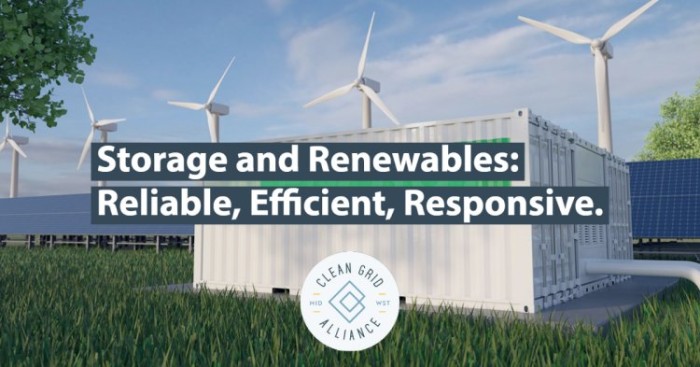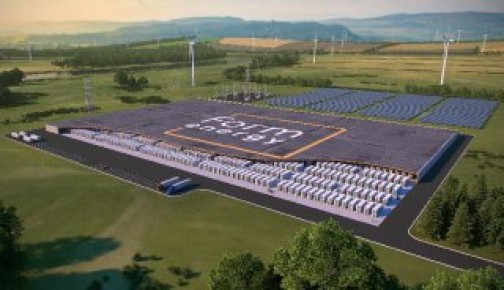Storage and Renewables: Reliant, Efficient, Responsive
 | Madelyn Smerillo, Regional Policy Manager |
 Battery Storage
Battery Storage | Madelyn Smerillo, Regional Policy Manager |
Renewable energy resources provide a myriad of benefits to the grid, but like any new technology, they also present a fresh set of challenges. While grid infrastructure has successfully accommodated solar and wind across the Midwest, we must take steps to satisfy the needs of consumers amidst the retirement of fossil fuels, ensuring we continue to deliver power when and where we need it. Battery storage, whether stand-alone or alongside renewables, is a valuable resource in the clean energy transition. There are many ways energy storage resources can support the delivery of more clean renewable energy while increasing the reliability, efficiency, and responsiveness of the grid.
Energy storage resources can help us deliver renewable energy across the Midwest. Solar and wind energy are variable. The amount of sunshine and strength of the wind vary constantly from day to day and throughout the day, as does load. However, even though the sun doesn't always shine and the wind doesn't always blow, the sun is always shining and the wind is always blowing – somewhere. Fortunately, great strides have been made in forecasting, especially for wind, making it relatively easy for MISO to anticipate and accommodate changes in the availability of these resources. But in the event that a resource is not producing enough electricity to supply power to all consumers that need it, we must ensure we can keep the lights on. That's where storage plays an important role.
A variety of strategies can be employed to distribute power to consumers across the Midwest, especially when typical generation sources are under producing. We can improve the reliability of our grid by using a variety of generation sources and developing a robust transmission system. In addition, energy storage can be installed by itself or co-located wind and solar to create hybrid projects. Both types allow us to capture electricity that is produced at times when supply is higher than demand and distribute it at times when demand is higher than supply.
Subscribe to our newsletter for the latest on energy & our work
In addition, energy storage helps reduce unused renewable energy. When renewables are over-producing and transmission capacity is congested or not available, low-cost, clean energy resources can go unused. Storage allows us to capture more renewables when they are available. This helps reduce the waste of renewables and the amount of fossil fuel resources on the system, and that translates to carbon reduction.
“Batteries can store surplus power and deliver energy to meet demand at a later time. In this way, batteries make the grid more efficient, successfully using more of the electricity that we produce.
Batteries also increase the responsiveness of the grid, allowing us to use stored electricity to supply power to consumers affected by extreme weather or other events that can cause disruption of service. In the event of unexpected fluctuations in demand, flexible energy storage allows us to fill in those gaps to meet the changing needs of consumers, again reducing the need for backup generation resources. Batteries keep electricity readily available to be dispatched by grid operators as needed. Altogether, energy storage makes the grid more responsive, and able to meet the changing need quickly.
 The Midwest is opening its doors to battery storage systems; one example is the coming Cambridge Energy Storage Project, a 1-megawatt storage system capable of continuously delivering power for 150 hours beginning in 2030.
The Midwest is opening its doors to battery storage systems; one example is the coming Cambridge Energy Storage Project, a 1-megawatt storage system capable of continuously delivering power for 150 hours beginning in 2030.
To take full advantage of these benefits, more work is needed to incorporate energy storage into our existing infrastructure. All resources on the grid must have established "rules of the road" that help utilities and grid operators to use them effectively. While the Federal Energy Regulatory Commission (FERC) has ordered all grid operators to provide market rules for stand-alone storage, most regions of the country are still working to develop and implement them. Hybrid resource market rules have even farther to go, and more coordination is needed to see this technology to fruition. Clean Grid Alliance is working in the stakeholder process at MISO (Midwest regional grid operator) to push for the development and implementation of these market rules in order to open up more opportunities for storage resources in the near future. New storage resources will play an important role in the changing resource mix in the Midwest.